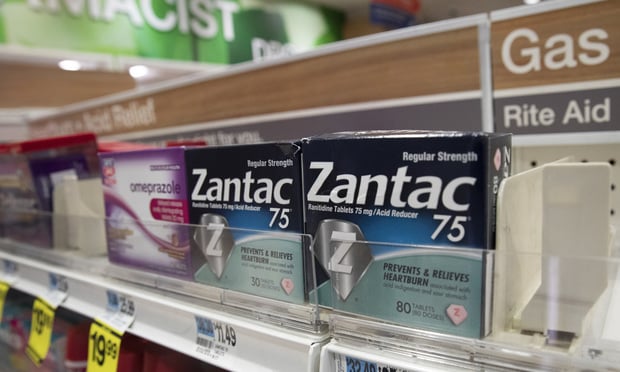WASHINGTON (AP) — The nation's poverty rate stood still at 15percent last year, the sixth straight year that it has failed toimprove.
|The Census Bureau reported Tuesday that 46.5 million Americans —or more than 1 in 7 — were living in poverty last year. That is notstatistically different from the number of impoverished in2011.
|The median household income was $51,017, unchanged from theprevious year, following two consecutive annual declines. The shareof people without health insurance declined slightly, from 15.7percent to 15.4 percent.
|The last significant decline in the poverty rate came in 2006,during the Bush administration and before the housing bubble burst.In 2011, the poverty rate dipped to 15 percent from 15.1 percent,but census officials said that change was statisticallyinsignificant.
|For the last year, the official poverty line was an annualincome of $23,492 for a family of four.
|The latest poverty numbers present unwelcome news for PresidentBarack Obama as he seeks credit for an economic turnaround afterthe 2007-2009 recession. He said Monday that congressionalRepublicans would reverse recent economic gains if they tookuncompromising stands in connection with looming budgetdeadlines.
|The Census Bureau's annual report offers a snapshot of theeconomic well-being of U.S. households for 2012, when theunemployment rate averaged 8.1 percent after reaching an averagehigh of 9.6 percent in 2010. Typically, the poverty rate tends tomove in a similar direction as the unemployment rate, so manyanalysts had been expecting a modest decline in poverty.
|The latest census data show that the gap between rich and poorwas largely unchanged over the last year, after increasing steadilysince 1993.
|GOP conservatives have been demanding a delay of Obama's newhealth care law as the price for supporting continued federalgovernment spending. The House is also expected to consider a billthis week that would cut food stamps for the poor by an estimated$4 billion annually — 10 times the size of cuts passed by theDemocratic Senate — and allow states to put broad new workrequirements in place for recipients.
|"This lack of improvement in poverty is disappointing anddiscouraging," said John Iceland, a former Census Bureau chief ofthe poverty and health statistics branch who is now a Penn Statesociology professor. "This lack of progress in poverty indicatesthat these small improvements in the economy are not yet beingequally shared by all."
||Ron Haskins, a senior fellow at the Brookings Institution whospecializes in poverty, agreed.
|"Everything's on hold, but at a bad level: poverty and incomedid not change much in 2012," he said. "So child poverty is stilltoo high and family income is still too low. The recession may beover, but try to tell that to these struggling families. Don'texpect things to change until the American economy begins togenerate more jobs."
|Broken down by state, Mississippi had the highest share of poorpeople, at 22 percent, according to rough calculations by theCensus Bureau. It was followed by Louisiana, New Mexico andArkansas. On the other end of the scale, New Hampshire had thelowest share, at 8.1 percent.
|The official poverty level is based on a government calculationthat includes only income before tax deductions. It excludescapital gains or accumulated wealth, such as home ownership.
|As a result, the official poverty rate takes into account theeffects of some government benefits, such as unemploymentcompensation. It does not factor in noncash government aid such astax credits and food stamps.
|David Johnson, the chief of the Census Bureau's householdeconomics division, estimated that unemployment benefits helpedkeep 1.7 million people out of poverty.
|If non-cash government aid were counted in the official formula,the earned income tax credit would have lifted another 5.5 millionpeople above the poverty threshold. Food stamps would have boosted4 million people, lowering the poverty rate to 13.7 percent.
|The slight dip in Americans without health coverage meant 48million people were without insurance. The drop was due mostly toincreases in government coverage, such as Medicaid and Medicare.The number of people covered by employer-provided health insuranceremained flat.
|The decline was modest compared to a bigger drop in 2011, whichoccurred due to increased coverage for young adults under the newhealth care law.
|Because the main provisions of the Affordable Care Act don'ttake effect until 2014, the latest census numbers offer a baselinenumber of uninsured by which increased coverage and effectivenessof the law will be measured. Many conservative Republicans remaincommitted to repealing it.
|Starting next year, the government will offer tax credits forpeople without access to job-based health insurance to buy privatecoverage through new markets, called exchanges, in each state. Openenrollment starts Oct 1. The new health care law also expandsMedicaid to cover millions more low-income people, but so far only24 states plus Washington, D.C., have gone along with theexpansion.
|The Congressional Budget Office estimates that by next year, thehealth law will reduce the number of uninsured in the U.S. by about25 percent. By 2017, it is projected that 92 percent of eligibleAmericans will have health insurance, a 10 percentage pointincrease from today's level.
|Other census findings:
|—Poverty remained largely unchanged across race and ethnicgroups. Blacks continued to suffer the highest rates of poverty at27.2 percent, compared to 25.6 percent for Hispanics and 11.7percent for Asian-Americans. Whites had a poverty rate of 9.7percent.
|—Child poverty stood at 21.8 percent.
|—Poverty among people 65 and older was basically unchanged at9.1 percent, after hitting a record low of 8.9 percent in 2009.
|___
|Associated Press writers Mary Clare Jalonick and RicardoAlonso-Zaldivar contributed to this report.
Complete your profile to continue reading and get FREE access to BenefitsPRO, part of your ALM digital membership.
Your access to unlimited BenefitsPRO content isn’t changing.
Once you are an ALM digital member, you’ll receive:
- Critical BenefitsPRO information including cutting edge post-reform success strategies, access to educational webcasts and videos, resources from industry leaders, and informative Newsletters.
- Exclusive discounts on ALM, BenefitsPRO magazine and BenefitsPRO.com events
- Access to other award-winning ALM websites including ThinkAdvisor.com and Law.com
Already have an account? Sign In
© 2024 ALM Global, LLC, All Rights Reserved. Request academic re-use from www.copyright.com. All other uses, submit a request to [email protected]. For more information visit Asset & Logo Licensing.








